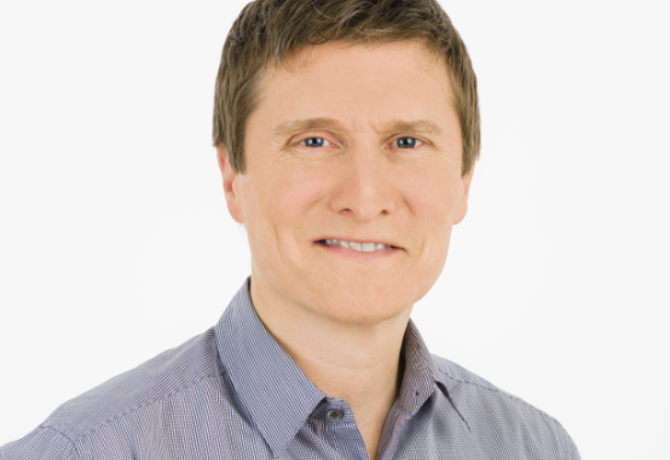Shutterstock is a veteran of digital content, founded in 2003 as a pure two-sided marketplace. M&M Global caught up with senior vice president of development Ben Pfeifer to find out how the content platform is adapting to serve 2016’s multimedia-hungry clients.
The stock photo company is currently celebrating a new partnership with Google to provide advertisers with access to content for digital and mobile display ad products, the latest victory in Shutterstock’s ongoing adaptation.
Initially, customers would use the site on a self-serve basis for still, creative stock photography. Now, clients can interact in this way, through a sales team member, or through partner platforms like Google or Facebook whilst building an ad or in embedding images into emails.
“We serve the market in many more ways than we used to and, on the content side, it’s gone from largely just creative still images to many, many different kinds of content, like music and stock footage,” says Pfeifer, going on to describe a recent acquisition of production sync licensing company Premium Beat.
A big shift that’s happened over the last year or so, the same day that the Premium Beat transaction was closed, was the acquisition of Rex Features, making the decisive step into editorial imagery as opposed to advertising content.
“In our editorial business we have staff photographers that are out covering entertainment and fashion events at a very high level,” he says. “We are backstage at the Oscars, we’re the only people that are inside the MET gala, we’re covering sporting events comprehensively in the UK and that’s all just our own operation.”
A partnership with the Associated Press was announced in April, meaning that the same second that a photo is available on the Associated Press platform, it’s available on Shutterstock. “There are a number of other relationships on the editorial side that give us access to places that are hard to get to,” he adds.
Competitive edge
Shutterstock maintains its competitive edge by ingesting content from 100,000 and contributors around the world, licensing five images each second – a total of 90 million images.
“I think when Shutterstock started, most media production and most production of any sort was a big company putting out a big magazine or newspaper, and what was just starting was this total democratisation of content,” Pfeifer comments.
“Today you have YouTubers making series, shows, feature-length films. You have bloggers that are now as credible a source of information as a lot of the big media publications. With so many more people needing content so they can publish, it only makes sense that it should be easier to get that content.”
Pfeifer describes Shutterstock as a tech company, despite being in the business of licensing content.
One of the company’s latest high-profile developments has been utilising its tech team with expertise in computer vision and image recognition to teach a computer what’s in an image with high-quality, descriptive metadata – including a tool to allow reverse image search to find “similar but different” images.
Tech versus creativity?
However, this function could make some photo editors concerned – with automation a rising worry, could it put them out of a job?
“We want to make tools that make their job easier. That doesn’t mean doing their job for them, although some photo editors need to do a million things in a day and if we can automate much of that, that’s great,” Pfeifer says. “It’s empowering them to do their job as well as possible.”
Pfeifer described 360-video and virtual reality (VR) as “very interesting”.
“At this point, 360 and VR, it’s clear that there’s a tonne going on in that space and it’s clear that in the next couple of years people are going to start using that much, much more, in advertising and in other contexts, so there’s a good opportunity and we’re monitoring it and exploring the right solutions for customers.”
But how fresh are the libraries? And what happens when images get old?
“When some images get dated, that’s a good thing because sometimes you want archival content, it’s very important. This is exactly the problem with many libraries out there, you want a picture of some people in a bar but they’ve got an iPhone 4 or something that’s clearly dated,” says Pfeifer.
However, Shutterstock has planned for this.
“The images with more dated material will get downloaded less, that will tell our algorithm to not feature them as highly in the search results, put the new stuff up that’s more popular in front of customers.
“We’re always trying to put the most relevant set of results in front of someone.”
‘All about video’
Looking to the future, Pfeifer feels that “it’s really all about video”.
“The world has definitely been moving to video for a long time and the editorial space is no different,” he comments, adding that the company has rights from the Associated Press to sell the entirety of its video archive.
“I think another thing we’re focusing on is making it easier to use an image or video once you’ve licensed it,” he continues, describing a new Editor product which allows users to make simple changes like cropping and adding text before downloading.
“Our feeling is that some people love the full feature set of Photoshop but that’s a scary programme to a lot of people,” he adds.
“We’re focusing on making things easier for our customers, even after they’ve licensed the image itself.”
Shutterstock currently operates in over 20 languages and 150 countries; however, Pfeifer says the company aims to expand its local content to serve diverse markets.
“Over 50% of people licensing a piece of content from Shutterstock are doing this for the first time,” he adds. “I think we still have a huge way to go in terms of connecting with more content producers all around the world and more photographers all around the world – people want to see the pictures, we should be able to provide it.”








